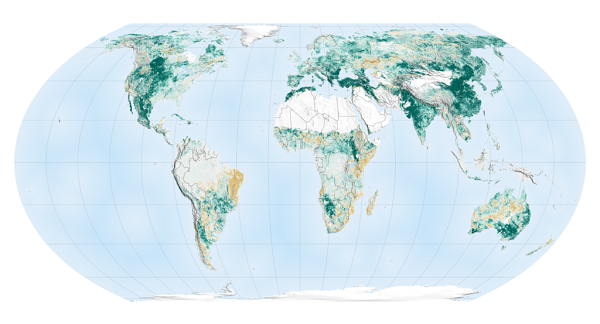The clearest way into the universe is through a forest wilderness.
John Muir
Month: February 2019
Forests in the News: February 2019
- Joshua Trees Destroyed in National Park During Shutdown May Take Centuries to Regrow (The New York Times)
- Joshua Tree national park ‘may take 300 years to recover’ from shutdown (The Guardian)
- Why America’s New Apartment Buildings All Look the Same (Bloomberg Businessweek)
- A Haircut for Puerto Rico’s Forests (NASA)
- You May Be Surprised to Learn Which 2 Countries Are Making The Globe a Lot Greener (NPR)
- Stolen bonsai trees ‘like our children’, couple say in plea to thieves (The Guardian)
- By poplar demand: the 2019 European Tree of the Year contest – in pictures (The Guardian)
Tree of the Month: Old Tjikko

From the BBC:
Scientists had believed the world’s oldest trees were 4,000-year-old pine trees found in North America. The oldest, a bristlecone pine named Methuselah located in California’s White Mountains, is aged 4,768, according to the Guinness Book of World Records.
The new record contender, which would have taken root just after the last ice age, was found among a cluster of around 20 spruces believed to be more than 8,000 years old at an altitude of 910m (2,985ft) on Fulu Mountain.The visible portion of the spruce was comparatively new, but analysis of four “generations” of remains – cones and wood – found underneath its crown showed its root system had been growing for 9,550 years, Umeaa University said.
Trends in Greening

From NASA:
The world is literally a greener place than it was twenty years ago, and data from NASA satellites has revealed a counterintuitive source for much of this new foliage. A new study shows that China and India—the world’s most populous countries—are leading the increase in greening on land. The effect comes mostly from ambitious tree-planting programs in China and intensive agriculture in both countries.
Hurricane Maria
From Gizmodo:
When Hurricane Maria struck Puerto Rico in September 2017, it knocked out power island-wide, battered infrastructure, and stripped forests of their leaves. Over the months that ensued, upwards of a thousand people would die as a result of the storm. So would about 30 million trees.
From NASA:
Shining Light on the Upper Peninsula

From NASA Earth Observatory:
Logging was also prevalent in the Upper Peninsula from the mid-1800s to about 1900. Trees were cut in the winter and brought to rivers by sleigh. In spring time, when snowmelt fed the rivers, timber was floated downstream to be sorted. These logs were marked with axe-cut symbols—similar to cattle branding—to avoid confusion about ownership as the logs floated to lake ports.
The Forest Maker

From The Guardian:
Over more than 30 years in west Africa, Tony Rinaudo has regenerated more than 6m hectares – an area nearly as large as Tasmania. His farmer-managed natural regeneration technique is responsible for 240m trees regrowing across that parched continent.
Official website of Farmer Managed National Regeneration
FMNR can and does cost absolutely nothing. This is the case in Niger Republic where some 5-6 million hectares have been reforested over the last 20 years largely by word of mouth with the idea spreading without government or NGO intervention from farmer to farmer.
Simulated Dendrochronology

From Northeastern University: (pdf)
Nature has its own ways of organizing information: organisms grow and register information from the environment. This is particularly notable in trees, which, through their rings, tell the story of their growth. Drawing on this phenomenon as a visual metaphor, the United States can be envisioned as a tree, with shapes and growing patterns influenced by immigration. The nation, the tree, is hundreds of years old, and its cells are made out of immigrants. As time passes, the cells are deposited in decennial rings that capture waves of immigration.
Everglades National Park

From The Daily Overview:
Everglades National Park in Florida is the largest tropical wilderness in the United States east of the Mississippi River, covering more than 1.5 million acres. The park was established in 1934 to protect the area’s fragile ecosystem and is home to 36 threatened or protected species including the American crocodile and West Indian manatee.
Trees and Machine Learning

From Medium:
So Descartes Labs built a machine learning model to identify tree canopy using a combination of lidar, aerial imagery and satellite imagery.
The classifier can be run over any location in the world where we have approximately 1-meter resolution imagery. When using NAIP imagery, for instance, the resolution of the tree canopy map is as high as 60cm. Drone imagery would obviously yield an even higher resolution.
See also: These Maps Show You Every Tree in Your City (Fast Company)